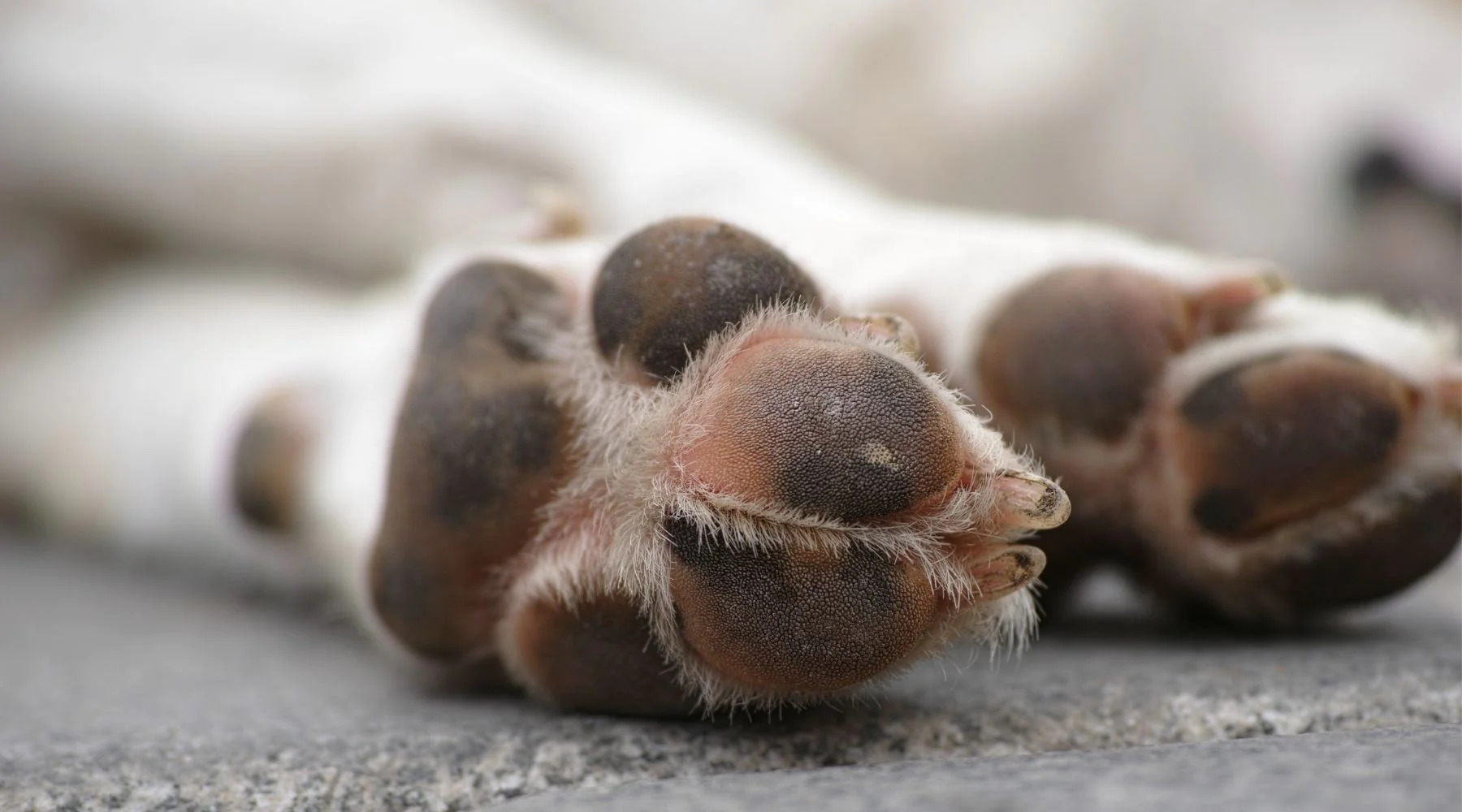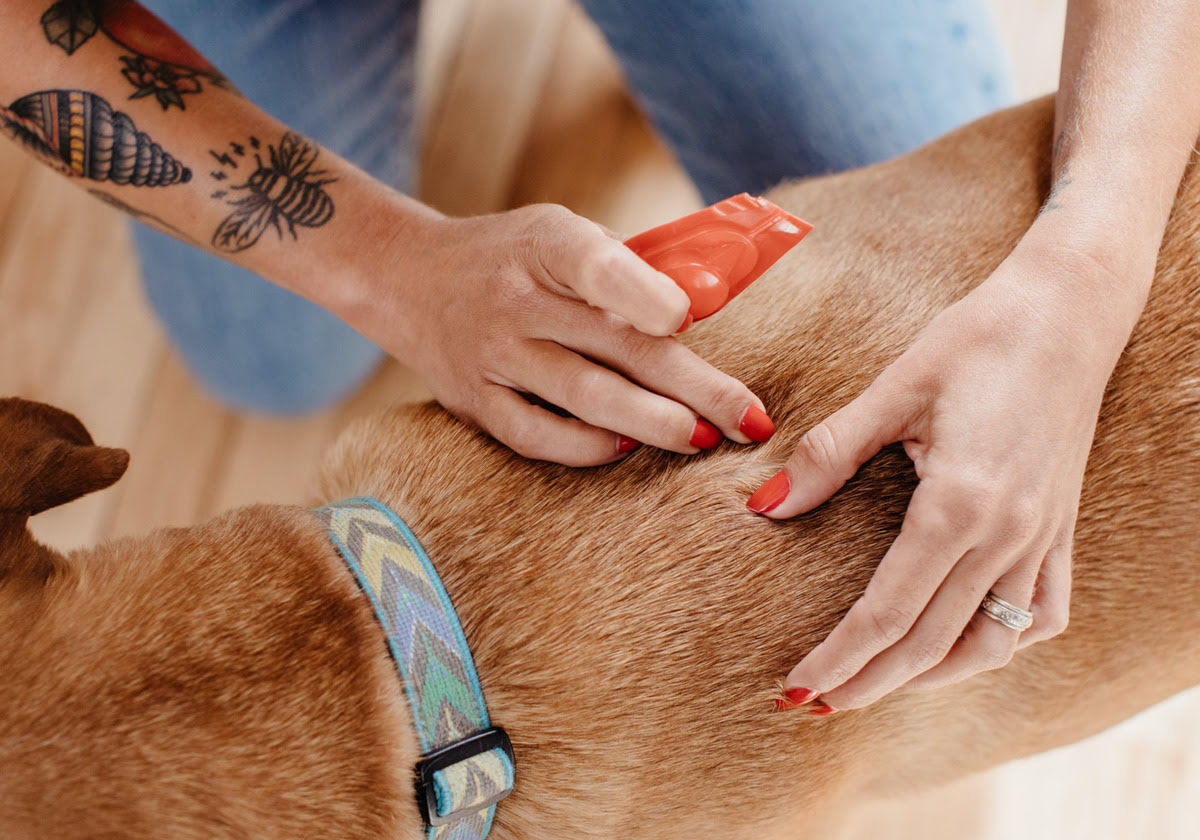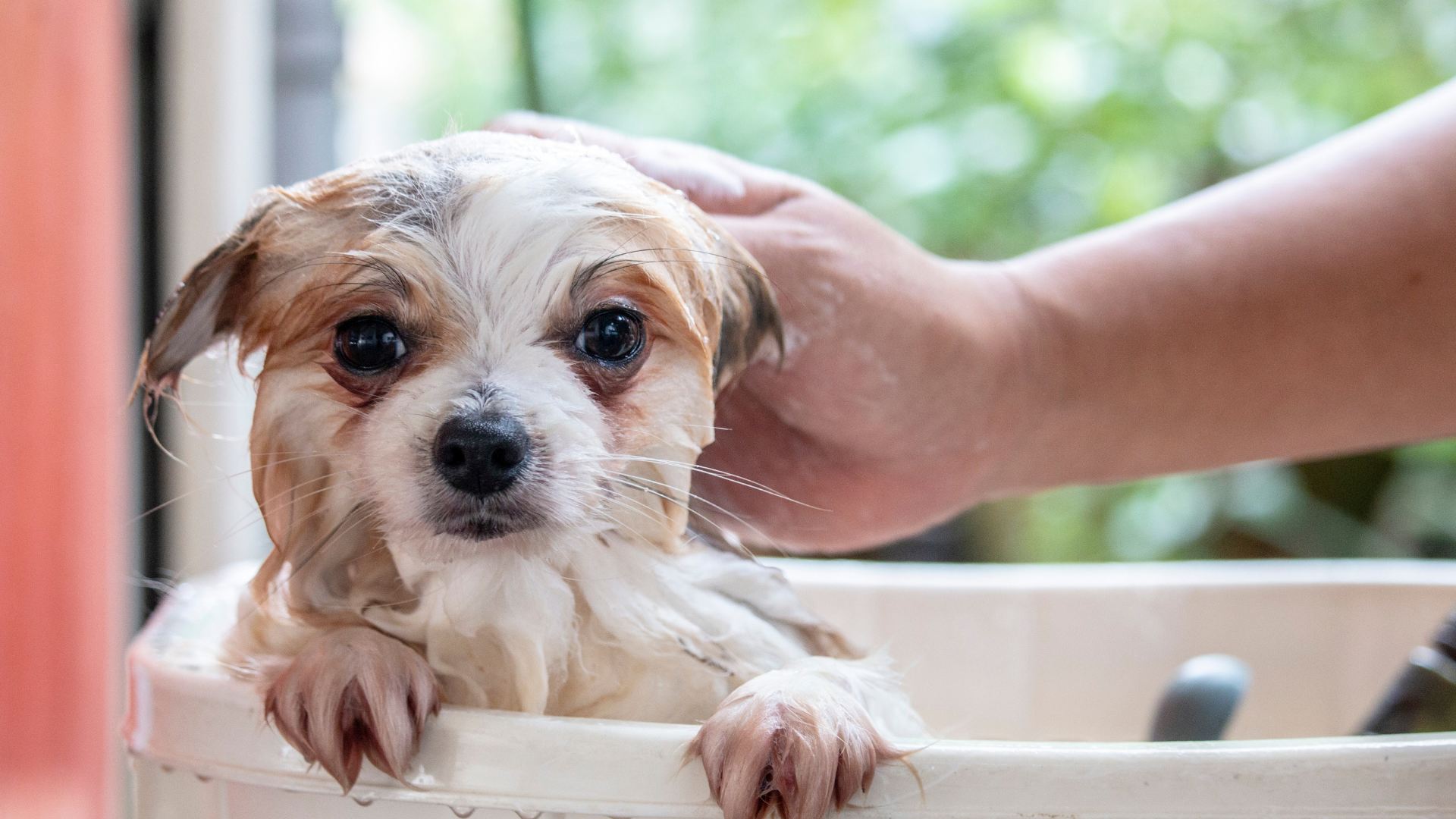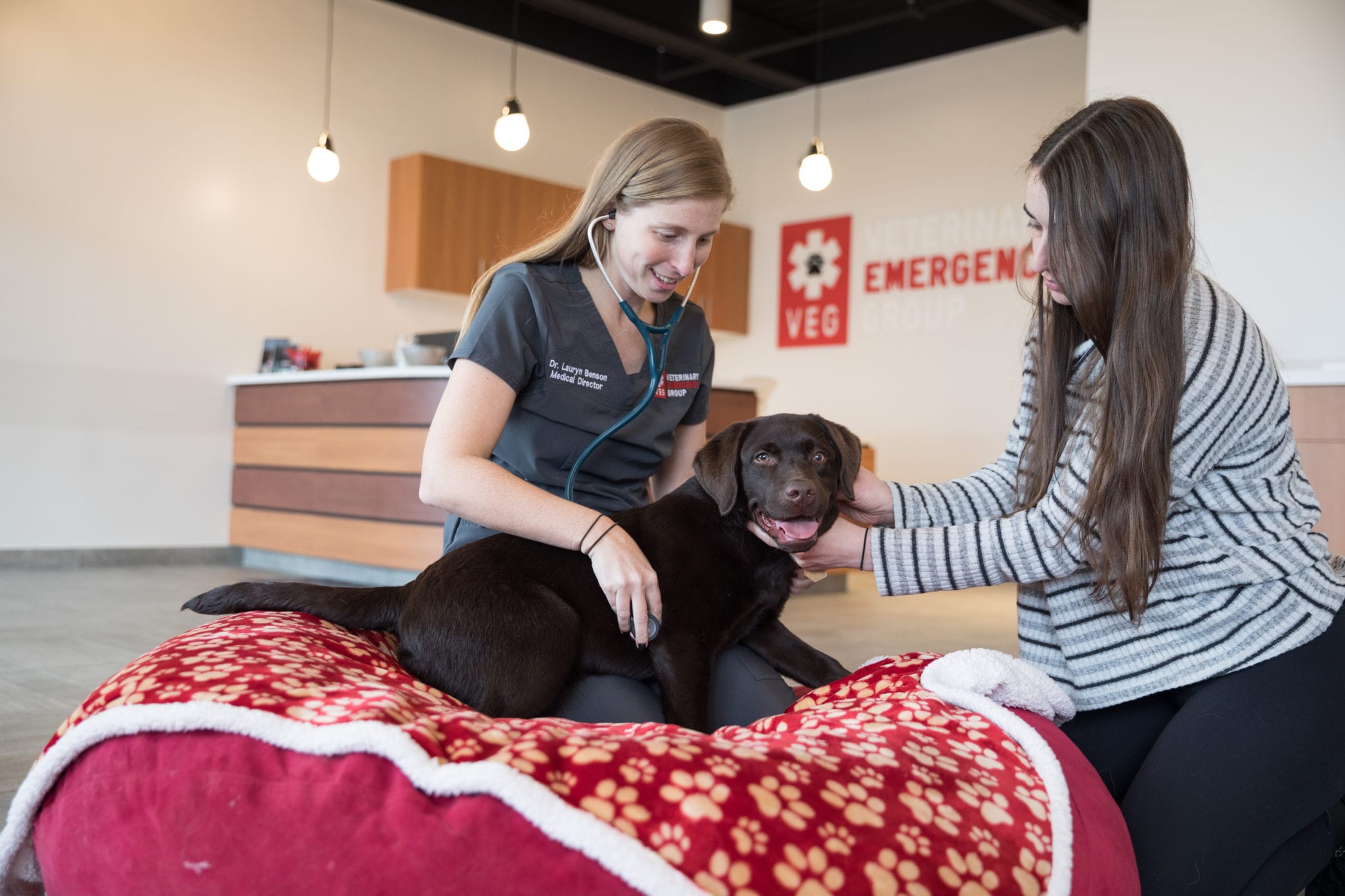Home>Health & Wellness>Common Health Issues>How To Treat Dog Paws With Allergies


Common Health Issues
How To Treat Dog Paws With Allergies
Published: January 26, 2024
Learn how to treat common health issues like dog paw allergies with our expert tips and remedies. Keep your furry friend happy and healthy!
(Many of the links in this article redirect to a specific reviewed product. Your purchase of these products through affiliate links helps to generate commission for Pawsomeoldies.com, at no extra cost. Learn more)
Table of Contents
Introduction
Dog paw allergies can cause discomfort and distress for our beloved furry companions. Just like humans, dogs can suffer from allergies that affect their paws, leading to itching, redness, and irritation. As pet owners, it's essential to understand the causes, symptoms, and treatment options for dog paw allergies to ensure our furry friends remain healthy and happy.
Allergies in dogs can be triggered by various factors, including environmental allergens, such as pollen, mold, and dust mites, as well as food allergies and contact irritants. When these allergens come into contact with a dog's paws, they can lead to a range of uncomfortable symptoms, from mild itching to severe inflammation.
In this comprehensive guide, we will delve into the world of dog paw allergies, exploring the common triggers, symptoms, and effective treatment options. By gaining a deeper understanding of this common health issue, pet owners can provide the necessary care and support to alleviate their dog's discomfort and prevent future allergic reactions.
Understanding the complexities of dog paw allergies is crucial for pet owners, as it enables them to recognize the signs of discomfort in their furry companions and take proactive measures to address the issue. Whether it's through at-home remedies or seeking professional veterinary care, the well-being of our dogs is of utmost importance. So, let's embark on this enlightening journey to uncover the secrets of treating and preventing dog paw allergies, ensuring our furry friends can frolic and play without the burden of allergic discomfort.
Read more: How To Treat My Allergies To Dogs
Understanding Dog Paw Allergies
Dog paw allergies are a common health issue that can significantly impact a dog's quality of life. These allergies can be triggered by a variety of factors, including environmental allergens, food sensitivities, and contact irritants. When a dog comes into contact with these allergens, their immune system may overreact, leading to a range of uncomfortable symptoms.
Environmental allergens, such as pollen, mold, and dust mites, are among the primary culprits for triggering dog paw allergies. When dogs walk on grass, soil, or other outdoor surfaces, their paws can come into contact with these allergens, leading to irritation and inflammation. Additionally, certain cleaning products, carpets, and fabrics within the home can also harbor allergens that may affect a dog's paws upon contact.
Food allergies can also manifest as paw allergies in dogs. Certain ingredients in commercial dog food, such as beef, chicken, wheat, and soy, can trigger allergic reactions, leading to paw licking, itching, and redness. Identifying and eliminating these allergens from a dog's diet is crucial in managing paw allergies caused by food sensitivities.
Contact irritants, such as certain chemicals, pesticides, and grooming products, can also cause allergic reactions in a dog's paws. These irritants can lead to redness, itching, and discomfort upon contact with the dog's paw pads or skin.
Understanding the potential triggers for dog paw allergies is essential for pet owners, as it enables them to take proactive measures to minimize their dog's exposure to these allergens. By identifying the specific allergens that affect their dog, pet owners can implement targeted strategies to alleviate their furry companion's discomfort and prevent future allergic reactions.
By gaining a deeper understanding of the various factors that can contribute to dog paw allergies, pet owners can become better equipped to recognize the symptoms and provide appropriate care for their beloved pets. This knowledge empowers pet owners to take a proactive approach in managing and preventing dog paw allergies, ultimately ensuring the well-being and comfort of their furry companions.
Identifying Symptoms of Dog Paw Allergies
Identifying the symptoms of dog paw allergies is crucial for pet owners to recognize when their furry companions are experiencing discomfort. Dogs may exhibit various signs that indicate they are suffering from paw allergies, and being able to identify these symptoms promptly can facilitate timely intervention and relief.
-
Excessive Paw Licking: Dogs with paw allergies may engage in excessive licking of their paws as a response to itching and irritation. Persistent licking can lead to redness, inflammation, and even the development of hot spots on the paw pads.
-
Chewing or Gnawing at Paws: In addition to licking, dogs may also chew or gnaw at their paws when experiencing allergic reactions. This behavior is often accompanied by visible signs of discomfort, such as paw redness and irritation.
-
Redness and Swelling: Allergic reactions can cause the paw pads and skin to become red, inflamed, and swollen. Pet owners should inspect their dog's paws regularly for any signs of abnormal redness or swelling, especially after outdoor activities.
-
Paw Odor: Dogs with paw allergies may develop a distinct odor emanating from their paws, often due to the accumulation of moisture from excessive licking and the presence of bacteria or yeast.
-
Limping or Lameness: Severe allergic reactions can lead to discomfort and pain, causing dogs to exhibit signs of limping or lameness. This is a clear indication that the dog's paws require immediate attention and care.
-
Skin Lesions or Sores: Allergic reactions can result in the development of skin lesions, sores, or scabs on the paw pads or between the toes. These visible signs of irritation should prompt pet owners to seek appropriate treatment for their dog's paw allergies.
By being vigilant and observant, pet owners can effectively identify these symptoms of dog paw allergies, allowing them to take proactive measures to alleviate their dog's discomfort and prevent the escalation of allergic reactions. Early recognition of these symptoms enables pet owners to provide timely care and seek appropriate treatment, ultimately ensuring the well-being and comfort of their furry companions.
Treating Dog Paw Allergies at Home
When it comes to addressing dog paw allergies at home, pet owners have several effective strategies at their disposal to alleviate their furry companion's discomfort and promote healing. These at-home remedies can provide relief from itching, redness, and inflammation, offering a comforting solution for dogs suffering from paw allergies.
1. Foot Soaks:
Gentle foot soaks can help soothe a dog's irritated paws and reduce discomfort. A mixture of warm water and soothing ingredients such as colloidal oatmeal or Epsom salt can be used for foot soaks. These ingredients possess anti-inflammatory properties that can help alleviate itching and reduce redness.
Read more: How To Treat A Dog With Eye Allergies
2. Paw Wipes:
Regularly wiping a dog's paws with hypoallergenic, fragrance-free paw wipes can help remove potential allergens and irritants that may be present on the paw pads. This simple practice can minimize the dog's exposure to allergens and promote cleanliness, reducing the likelihood of allergic reactions.
3. Protective Balms:
Application of protective paw balms or moisturizing creams can help create a barrier between the dog's paws and potential allergens. These balms can also provide hydration to dry, irritated paw pads, promoting healing and preventing further discomfort.
4. Dietary Adjustments:
In cases where food allergies are suspected to be the cause of paw allergies, pet owners can consider making dietary adjustments. Transitioning the dog to a hypoallergenic or limited-ingredient diet can help identify and eliminate potential food triggers, thereby reducing allergic reactions.
5. Environmental Control:
Minimizing a dog's exposure to environmental allergens can significantly alleviate paw allergies. This can be achieved by regularly cleaning and vacuuming the home to reduce dust and pollen, using hypoallergenic bedding, and avoiding outdoor activities during peak pollen seasons.
Read more: How To Treat My Dog’s Allergies
6. Allergy-Friendly Grooming Products:
Opting for hypoallergenic grooming products, including shampoos and conditioners, can help minimize skin irritation and allergic reactions. These products are formulated to be gentle on a dog's skin, reducing the risk of paw allergies triggered by grooming routines.
By implementing these at-home remedies, pet owners can play a proactive role in managing their dog's paw allergies, providing relief and comfort to their furry companions. However, it's important to monitor the dog's response to these treatments and seek veterinary care if the symptoms persist or worsen. With attentive care and the right interventions, pet owners can effectively address dog paw allergies at home, ensuring their beloved pets can enjoy optimal paw health and overall well-being.
Seeking Veterinary Care for Severe Allergies
In cases of severe dog paw allergies, seeking veterinary care is crucial to address the underlying causes and provide effective treatment. When a dog exhibits persistent or worsening symptoms despite at-home remedies, or if the allergic reactions significantly impact their quality of life, professional veterinary intervention becomes necessary.
Upon consulting a veterinarian for severe dog paw allergies, a comprehensive assessment will be conducted to identify the specific triggers and underlying factors contributing to the allergic reactions. This may involve allergy testing to pinpoint environmental allergens or food sensitivities that are affecting the dog's paws. By gaining a deeper understanding of the allergens at play, the veterinarian can develop a targeted treatment plan tailored to the dog's unique needs.
Veterinary care for severe dog paw allergies may involve the prescription of anti-inflammatory medications to alleviate redness, swelling, and itching. These medications can provide relief from discomfort and help manage the allergic reactions effectively. In cases where secondary infections have developed due to excessive paw licking or irritation, the veterinarian may prescribe antibiotics or antifungal medications to address these complications.
Furthermore, veterinarians may recommend immunotherapy or allergy desensitization treatments for dogs with severe paw allergies. These treatments aim to desensitize the dog's immune system to specific allergens, reducing the severity of allergic reactions over time. This proactive approach can significantly improve the dog's quality of life and minimize the impact of paw allergies on their overall well-being.
In some instances, veterinarians may advise dietary modifications, including the transition to hypoallergenic or prescription diets tailored to address food allergies contributing to paw allergies. Additionally, they may provide guidance on environmental control measures to minimize the dog's exposure to allergens, such as implementing air purifiers, using allergen-resistant bedding, and creating allergen-free zones within the home.
Regular follow-up appointments with the veterinarian are essential to monitor the dog's response to treatment and make any necessary adjustments to the management plan. Through ongoing veterinary care, pet owners can ensure that their furry companions receive the support and interventions needed to effectively manage severe dog paw allergies and promote optimal paw health.
By seeking veterinary care for severe dog paw allergies, pet owners demonstrate their commitment to prioritizing their dog's well-being and ensuring that they receive the highest standard of care. With the expertise and guidance of veterinary professionals, pet owners can navigate the complexities of severe paw allergies and work towards providing their furry companions with a comfortable, allergy-free life.
Preventing Future Dog Paw Allergies
Preventing future dog paw allergies is a proactive approach that focuses on minimizing a dog's exposure to potential allergens and creating a supportive environment that promotes optimal paw health. By implementing preventive measures, pet owners can significantly reduce the risk of their furry companions experiencing allergic reactions, ensuring long-term paw comfort and well-being.
Environmental Management:
Regular cleaning and maintenance of the home environment play a crucial role in preventing dog paw allergies. This includes frequent vacuuming to remove dust, pollen, and other allergens, as well as washing pet bedding and grooming the dog regularly to minimize the accumulation of potential irritants.
Read more: How To Treat Dogs With Skin Allergies
Allergen-Free Zones:
Designating specific areas within the home as allergen-free zones can provide a safe haven for dogs prone to paw allergies. These zones can be equipped with hypoallergenic bedding, free from potential allergens, and serve as retreats where dogs can rest without the risk of exposure to irritants.
Paw Hygiene:
Maintaining proper paw hygiene is essential in preventing future allergies. Regularly wiping a dog's paws after outdoor activities can help remove potential allergens and reduce the likelihood of allergic reactions. Additionally, keeping the paw pads moisturized with pet-safe balms can promote healthy skin and minimize the risk of irritation.
Nutritional Considerations:
Opting for high-quality, hypoallergenic dog food can play a significant role in preventing food-related paw allergies. These specialized diets are formulated to minimize the risk of allergic reactions, providing a balanced and nourishing approach to supporting a dog's overall health, including paw well-being.
Regular Veterinary Check-ups:
Scheduling routine veterinary check-ups allows for proactive monitoring of a dog's overall health, including the condition of their paws. Veterinarians can provide guidance on preventive measures, conduct allergy testing if necessary, and offer tailored recommendations to minimize the risk of future paw allergies.
Read more: How To Treat Cancer In Dogs
Allergy Testing and Immunotherapy:
For dogs prone to severe allergies, allergy testing and immunotherapy can be valuable preventive measures. Identifying specific allergens through testing enables pet owners to implement targeted strategies to minimize exposure. Immunotherapy, in the form of allergy shots or oral treatments, can desensitize a dog's immune system, reducing the severity of allergic reactions over time.
By embracing these preventive strategies, pet owners can create a supportive and allergen-minimized environment for their furry companions, significantly reducing the risk of future dog paw allergies. This proactive approach not only promotes paw health but also fosters a comfortable and allergy-free lifestyle for dogs, allowing them to thrive and enjoy life to the fullest.
Conclusion
In conclusion, dog paw allergies are a common health concern that can significantly impact the well-being and comfort of our furry companions. Understanding the various triggers, symptoms, and treatment options for paw allergies is essential for pet owners to provide the necessary care and support to alleviate their dog's discomfort and prevent future allergic reactions.
By delving into the world of dog paw allergies, we have gained valuable insights into the diverse factors that can contribute to allergic reactions in a dog's paws. From environmental allergens and food sensitivities to contact irritants, the potential triggers for paw allergies are multifaceted. This understanding empowers pet owners to take proactive measures to minimize their dog's exposure to these allergens, thereby reducing the risk of allergic reactions.
Identifying the symptoms of dog paw allergies is a crucial aspect of proactive pet care. By recognizing signs such as excessive paw licking, redness, swelling, and paw odor, pet owners can promptly intervene and provide the necessary relief to their furry companions. Early identification of these symptoms enables pet owners to take proactive measures to alleviate their dog's discomfort and prevent the escalation of allergic reactions.
When it comes to addressing dog paw allergies, pet owners have a range of at-home remedies at their disposal, including foot soaks, paw wipes, protective balms, dietary adjustments, environmental control, and allergy-friendly grooming products. These proactive measures enable pet owners to play an active role in managing their dog's paw allergies, providing relief and comfort to their furry companions.
In cases of severe dog paw allergies, seeking veterinary care is paramount to address the underlying causes and provide effective treatment. Professional veterinary intervention may involve allergy testing, prescription medications, immunotherapy, dietary modifications, and environmental control measures, all tailored to manage severe paw allergies and promote optimal paw health.
Preventing future dog paw allergies is a proactive approach that focuses on minimizing a dog's exposure to potential allergens and creating a supportive environment that promotes optimal paw health. By implementing environmental management practices, maintaining proper paw hygiene, considering nutritional factors, scheduling regular veterinary check-ups, and embracing allergy testing and immunotherapy, pet owners can significantly reduce the risk of future paw allergies in their furry companions.
In essence, by gaining a deeper understanding of dog paw allergies and embracing proactive measures, pet owners can ensure that their beloved furry companions enjoy optimal paw health and overall well-being. Through attentive care, timely intervention, and preventive strategies, pet owners can create a comfortable and allergy-free environment for their dogs, allowing them to thrive and revel in a life free from the burden of paw allergies.











